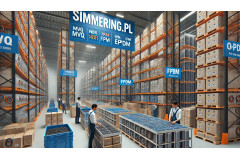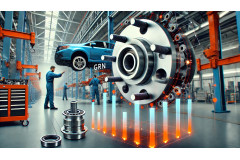
A Comprehensive Guide to Selecting Bearing Housings for Industrial Applications: Key Factors for Maximizing Machinery Performance and Durability
Introduction
Bearing housings are essential in industrial applications, directly influencing the efficiency and longevity of equipment. This guide provides engineers with insights into advanced selection criteria, including load calculations, failure analysis, sealing options, and maintenance challenges to optimize bearing housing choice for demanding environments.
1. Load Calculations: Dynamic and Static Loads
Formulas and Examples
Bearing housing selection depends on understanding dynamic and static loads. Dynamic load, measured in kilonewtons (kN), describes the bearing's operational load, while static load covers resting conditions. The formula for dynamic load capacity (C) is:
where represents the load, and is shaft diameter. For instance, in heavy industries like mining, bearing housings often handle dynamic loads between 15-30 kN for spherical roller bearings.
Case Studies in Industry
In automotive applications, bearing housings must support high-speed dynamic loads (up to 10,000 RPM) and 8 kN loads, favoring high-strength cast iron housings. In mining, steel housings are used to withstand extreme loads and vibrations.
2. Bearing Housing Failure Analysis
Common Failure Modes
Improper housing selection may lead to premature wear. Common failure causes include:
- Misalignment – improperly fitted housings can cause excessive friction and damage.
- Insufficient Sealing – dust and moisture ingress accelerates corrosion.
- Material Misselection – cast iron in wet environments may corrode.
Solutions and Prevention
To prevent failure, corrosion-resistant materials (like stainless steel) and labyrinth seals, which add protection against contaminants, are recommended. Regular alignment calibration minimizes failure risk.
3. Advanced Sealing Mechanisms
Types of Seals
Seal selection depends on environmental factors:
- Labyrinth Seals – ideal for dusty environments, such as cement plants.
- Contact Seals – effective for moisture but create higher friction.
Industry Examples
In the food industry, contact seals prevent external substances from entering the bearing, while mining often relies on labyrinth seals to protect against dust and gravel.
4. Matching Bearing Housing Types to Bearing Types
Housing-Bearing Compatibility
- Ball Bearings – pillow block housings easily absorb high-speed loads.
- Roller Bearings – split housings allow for easy maintenance access.
Compatibility Analysis
In mining, spherical roller bearings in split housings enable easy replacement with minimal downtime. In textiles, ball bearings in pillow blocks are common due to lower load requirements and easy installation.
5. Maintenance and Regular Bearing Housing Inspections
Best Installation Practices
Precise calibration during installation and avoiding overtightening are crucial. Torque wrenches are recommended for correct torque settings.
Maintenance Examples
In chemical industries, where machinery is exposed to aggressive substances, regular lubrication and inspections are critical. For high-dynamic load applications, automatic lubrication systems help maintain consistent lubrication, reducing wear and extending bearing life.
Conclusion
Selecting the right bearing housing is critical for bearing protection and reliable machine operation. Proper material choice, load analysis, and environmental monitoring enable equipment optimization and longevity.




Leave a Reply Cancel Reply